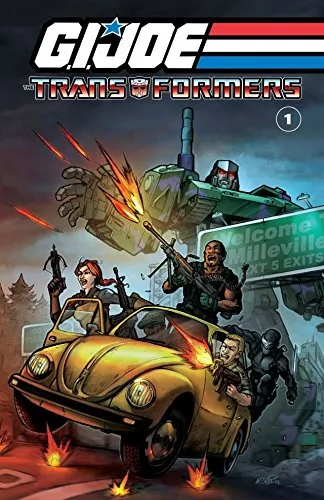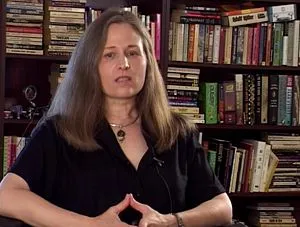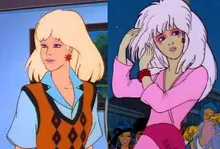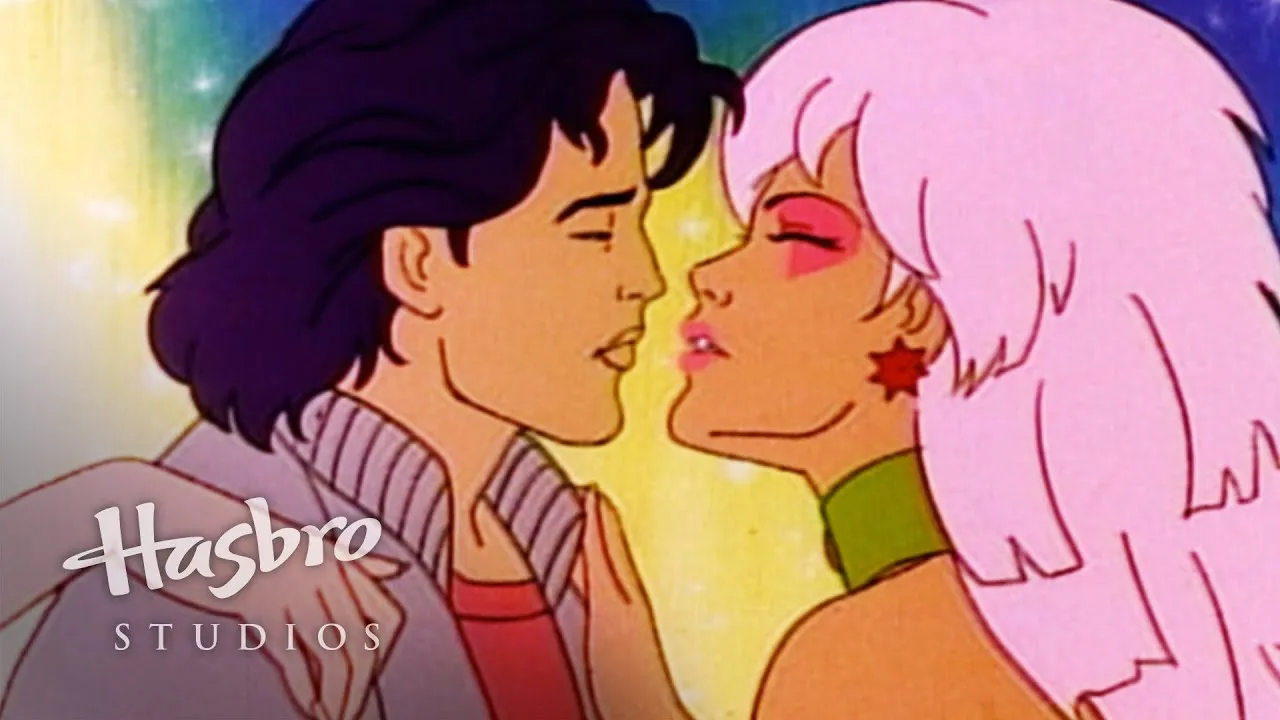
One of the most popular and successful animated series of the 1980s that had a large following mainly among female audiences.

With the success of the Transformers and G.I. Joe in 1985 Hasbro decided in co-production with Marvel and Sunbow Productions to create a new cartoon that would allow them to capture the attention of girls.
The same team that had developed the series of robots and special commands was chosen by the company to carry out this project and the result was a great goal.
The success of Jem and the Holograms, which allowed it to last three seasons on the air until 1988, was based on the fact that although the proposal was aimed mainly at girls, the cartoon was not purely feminine like other productions of those days in the line of The Care Bears, Rainbow Brite or My Little Pony, which for those of us were kids, they were boring.
This was a cartoon that had a tremendous production team, where artists who later stood out in the world of animation and comics participated.

Jem was the brainchild of Christy Marx, an excellent comic book writer who became known for her work in the magazines Conan, The Barbarian, Red Sonja, and the cult work Elfquest.
For her work on this show and other classics such as The Ninja Turtles and GI Joe, in 1998 she became the first woman in the United States to receive the Caucus Award, which is the highest award with which writers are honored in that country. in animation.
Besides Marx, other great comic book artists who participated in Jem's scripts were Marv Wolfman, Paul Dini, Greg Weisman (Captain Atom), Cary Bates (Superman, Flash), Roger Slifer (Omega Men) and Michael Reaves (Star Wars).
The animation was entirely made by the Japanese producer Toei, those responsible for classics such as Mazinger, Dragon Ball, Candy-Candy, The Knights of the Zoo and Sailor Moon.
As if this were not enough, the animation supervisors and directors of the series were veterans of the DePatie-Freleng company, who developed the iconic cartoon of The Pink Panther.
You didn't know about these things as a kid, of course, but Jem was really a well-done cartoon and the talent gathered paid off when it aired.

The plot revolved around Jerrica Benton, who when her father died inherited the Starlight Music company and had to deal with the vultures who wanted to stay with the company.

Before she died, her father gave her a gift of magic earrings that hid a secret. Jerrica then discovers a supercomputer capable of creating all kinds of holograms and fantastic images. In this way, the protagonist decides to use technology to create her own music group and compete with the Misfits, an evil rock band that sought to take over Starlight Music.
This was not the original plot. In the first argument of Christy Marx the real protagonist was called Morgan Benton and with some friends, he formed a music group, which through the supercomputer became women!
They were actually M and the Holograms.
The cartoon would have been a kind of Ranma 1/2 but related to rock, where the fun was that the protagonists changed their sex. At Hasbro they thought it was going to be too confusing for kids and they tweaked it.
As in the United States, you cannot register a trademark with a single letter, M's name was corrected by Jem.
It is important to note that this series broke with several conventions when it was first met.
In the first place, it was one of the first cartoons conceived in the West where the arguments were worked as a real series. Although the characters lived a different adventure in each episode, the things that happened in one chapter had an impact on the next.

On the other hand, along with Robotech it was the only animated series where romantic relationships were treated with realism. Jem and his boyfriend Rio Pacheco kissed and hugged each other all the time, they had physical contact, something that was rare to see in other cartoons of that time.
Another detail that is not minor was that the series brilliantly captured all the culture of the 80s in terms of music, aesthetics, and costumes.
In the United States, this cartoon was very successful at the time to the point that the Jem Con has existed for several years, which is a convention that annually brings together fans from all over the world who meet the artists who worked on the program and exchange merchandising of the series.
